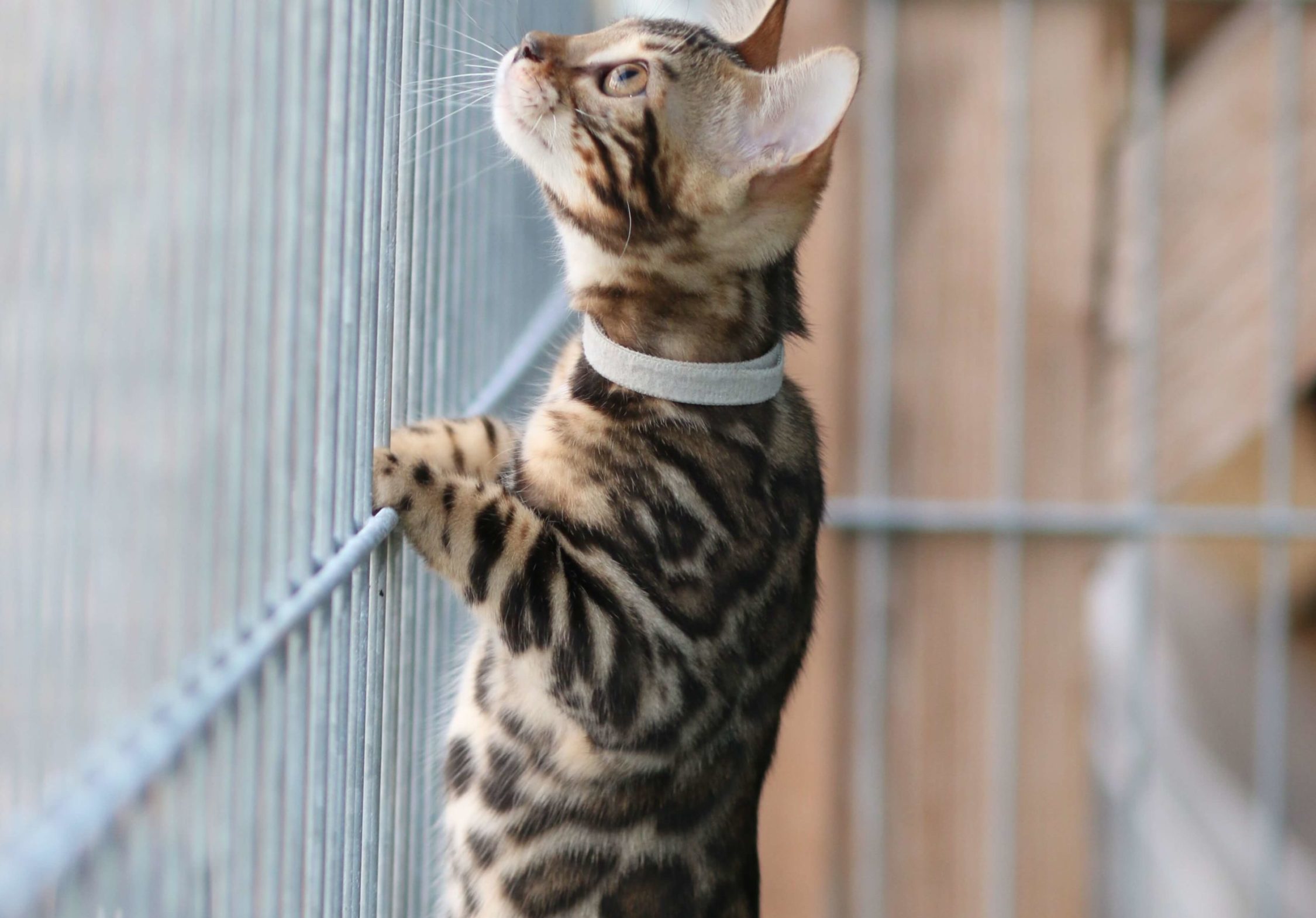One of the most common activities for bengal cats to engage in is climbing.
Bengals are known to climb anything around them and seem to be fearless in their quests for higher surfaces to sit on.
If you have counters, sofas, shelves, bathroom sinks, or any other raised surface in your home, your bengal has probably tried to or will try to scale it.
Bengal cats climb more than other domestic cat breeds because they descend from the Asian leopard cat.
Bengals are “hybrid cats” and share DNA both with domestic cat breeds and with wild cats.
These genetic differences between bengals and other domestic cats account for the variances in behavior between bengals and normal cats.
Bengals have a more explorative and curious personality than most other cats do.
The Asian leopard cat that bengal cats are related to commonly climbs trees and seeks out high areas in order to seek out prey and gain a farther view of it’s territory.
By climbing trees and getting to higher ground, Asian leopards are both safer and more likely to be able to catch a potential meal.
Bengal cats share this behavior with Asian leopards and will try to climb the things around them to give them a sense of security and also watch out for any other animals in their environment.
Can You Train Bengal Cats To Stop Climbing?
If you want your bengal cat to stop climbing, you can train them to not climb by rewarding them for staying off areas you don’t want them to be on.
If you want to your bengal cat to stay off the kitchen counters, you can pick them up and move them when they climb on them, and give them a treat or catnip as a reward for when they get off the counters on their own.
Another way to encourage your bengals not to climb on areas you don’t want them to be on is to put a sticky covering over the surface of those areas.
A good product to use for this purpose is anti-scatch tape.
Anti-scratch tape can be put over a counter, couch, or shelf, to discourage your bengal from clawing or walking on that area.
Anti-scratch tape works by being sticky on both sides so that it will stay in place and also annoy your cat when they try to walk on it.
Your bengal will naturally avoid that area and instead climb on other surfaces that you’d prefer them to be on.
You can also put catnip on surfaces you want them to climb on and they will form positive associations with that space, making them prefer to climb on it over other areas in your home.
Do Bengal Cats Climb Less As They Grow Older?
As bengal cats age, they will mellow out and not be as crazy as they were as kittens.
Bengals tend to be very energetic during the first 1-2 years of their lives then gradually settle down into calmer cats once they’re grown.
Bengal cats will of course still be more energetic than other domestic cats and climb more than a fully domestic cat would, but they will not be as eager to scale couches and climb on top of refrigerators as they were when they were kittens.
Most bengals will climb less as they grow older, but it is better to train them not to climb on surfaces you don’t want them to be on than it is to wait until they grow out of this behavior.
Climbing is normal and healthy for bengals to do so you should give them some way to get activity in and climb objects while also keeping your home orderly and as bengal-proofed as you need it to be.

Jazalyn says:
Although today’s domestic Bengal cats typically come from breeding Bengals to other Bengals, some lawmakers are concerned about the cats’ wild instincts. That’s why proof that the cat has been removed from its wild ancestors for at least four generations may be required in some states. Check your state’s regulations before buying or adopting a Bengal cat.
Antoinette Waisanen says:
Way cool! Some very valid points! I appreciate you writing this article and the rest of the site is very good.